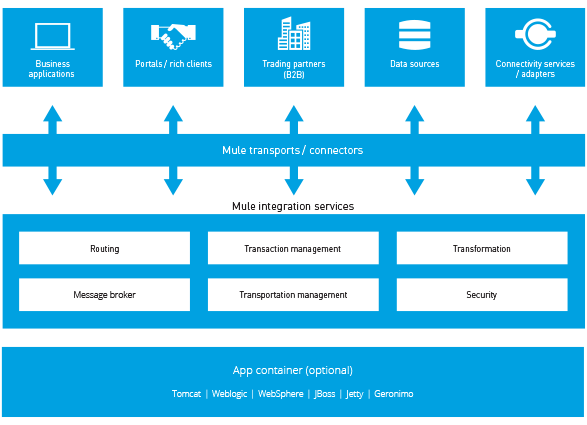- Home
- Resources
- Articles
- Enterprise integration
- The challenges of ERP integration
The challenges of ERP integration
An ERP system’s primary purpose is to automate business processes in order to make the business more efficient and provide better visibility into those processes. But in order to get the benefits of ERP systems, businesses need to to integrate their ERP system with their other enterprise systems. This can often be difficult; the challenges of ERP integration involve both the age of the systems, the architecture of these systems, and the need to integrate new applications and systems into the original ERP.
ERPs are designed to integrate and automate back-office business processing functions; ERPs like SAP and Netsuite were intended to make life easier for businesses and allow for increased productivity. When approached correctly, ERPs can make a business’ IT architecture much stronger, but the wrong approach can have deleterious consequences.
In many cases, ERP implementations span years; what begins as a few functional modules grows into a primary ERP system with a number of applications alongside it. This architecture pattern can create challenges when integrating ERPs with the rest of the enterprise systems; businesses have to find new ways to implement these systems that will allow them to provide a united application architecture and integrate isolated applications. This type of integrated architecture proves valuable in increasing business agility and flexibility.
Challenges for ERP Implementations
Multiple ERPs to support
Organizations tend to initially install modules from the same ERP vendor at the start of the ERP implementation. But as this process continues, organizational requirements expand; companies often find themselves purchasing modules from different vendors. Not only must the business now change the existing integrations to other applications, it must also support data transformation to and from a number of additional data formats. If the existing integrations are tightly coupled, this becomes costly to modify and increasingly brittle.
Real-time vs Batch integration
ERPs’ business process integration has in the past been batch oriented, which used to work well as transactions were primarily inbound integrations. However, there is now a need to provide outbound data as well from the ERP to other enterprise systems. And in many cases, these systems, like web portals and mobile devices, require real-time information. This can’t be handled by traditional ERP integration implementations.
Integration Shift
Thanks to the explosion of SaaS and mobile applications, businesses not only need to integrate their ERPs to internal systems in their data centers, but they also integrate to external systems including cloud-based applications and mobile platforms that use newer and still evolving protocols. Therefore it becomes a critical strategic move for businesses to choose an integration approach that is up to date with newer protocols and can handle the evolution of these technologies.
An ESB solves ERP integration challenges

In many cases, an ESB is the best choice to integrate an ERP into enterprise systems in a scalable, flexible, and future-proof way. An ESB provides three important benefits for ERP integrators:
Easy to Expand
An ESB can accommodate new applications easily. When a new application is ready, all the IT team needs to do to incorporate it into the existing infrastructure is hook it up to the bus.
Scalable and Distributable
ESBs use individual components for each feature, making it much simpler and cost-effective to ensure high availability and scalability for critical parts of the architecture.
Incremental Adoption
The modular design of an ESB allows for incremental adoption as resources become available.
Anypoint Platform
Mule, the runtime engine of Anypoint Platform, is the only unified integration platform that combines data and application integration across legacy systems, SaaS applications, and APIs with hybrid deployment options for maximum flexibility. Mule runtime has the following key features that make it ideal to integrate ERPs:
It can be deployed anywhere
Mule runtime can be deployed as an on-prem integration engine, hybrid iPaaS, or API gateway. Applications can be moved from on-premises to the cloud with one click.
Integrate in real-time or batch
Events can be Integrated and orchestrated in real-time. Developers can easily query and map complex data structures with Mule’s data integration framework, powered by the innovative DataWeave data query language. Millions of records can be moved between applications or data sources using Mule’s built-in batch capabilities.
It enables universal connectivity
Developers can connect quickly and easily to thousands of REST or SOAP APIs, select from a library of pre-built Anypoint Connectors and MuleSoft Certified Connectors, or leverage Mule’s simplified connector model to build reusable connectors for any system with Anypoint Connector DevKit.
Thanks to today’s hyper-fast, hyper-competitive business environment, companies need as their business processes to be efficient as possible. Anypoint Platform’s runtime engine is the ideal solution to provide maximum flexibility, scalability, and adaptability. Find out more about Anypoint Platform for enterprise integration and how it can help your business.



